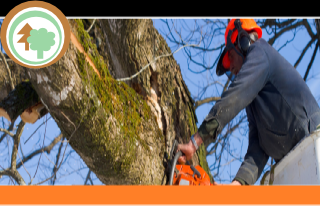birchwoodtreecare.co.uk -
Website Terms | Privacy Statement
designed by UKWebb.com
. Made by Serif.

Birchwood Tree Care

Qualified and Insured Tree Surgeon


WHAT’S IN A WORD?
Tree pruning may be necessary to maintain a tree in a safe condition, to remove dead branches, to promote growth, to regulate size and shape or to improve the quality of flowers, fruit or timber. Improper pruning can lead to trees becoming unsightly, diseased and/or potentially dangerous.
It is important that clients understand the basic terms commonly used to describe tree work operations so that they can ask for what they want or understand what the arboriculturist is recommending. Did you know, for example, that a ‘crown thin’ will not reduce the height of the tree? Nor will a ‘crown lift to 4m’.
The three main pruning options are shown below which you may find helpful.
 Crown Thinning
Crown Thinning
Crown thinning is the removal of a portion of smaller/tertiary branches, usually at the outer crown, to produce a uniform density of foliage around an evenly spaced branch structure. It is usually confined to broad-
 Crown Lift or Crown Raising
Crown Lift or Crown Raising
Crown lifting is the removal of the lowest branches and/or preparing of lower branches for future removal. Good practice dictates crown lifting should not normally include the removal of large branches growing directly from the trunk as this can cause large wounds which can become extensively decayed leading to further long term problems or more short term biomechanical instability. Crown lifting on older, mature trees should be avoided or restricted to secondary branches or shortening of primary branches rather than the whole removal wherever possible. Crown lifting is an effective method of increasing light transmission to areas closer to the tree or to enable access under the crown but should be restricted to less than 15% of the live crown height and leave the crown at least two thirds of the total height of the tree. Crown lifting should be specified with reference to a fixed point, e.g. ‘crown lift to give 5.5m clearance above ground level’.
 Crown Reduction
Crown Reduction
The reduction in height and/or spread of the crown (the foliage bearing portions) of a tree. Crown reduction may be used to reduce mechanical stress on individual branches or the whole tree, make the tree more suited to its immediate environment or to reduce the effects of shading and light loss, etc. The final result should retain the main framework of the crown, and so a significant proportion of the leaf bearing structure, and leave a similar, although smaller outline, and not necessarily achieve symmetry for its own sake. Crown reduction cuts should be as small as possible and in general not exceed 100mm diameter unless there is an overriding need to do so. Reductions should be specified by actual measurements, where possible, and reflect the finished result, but may also refer to lengths of parts to be removed to aid clarity, e.g. ‘crown reduce in height by 2.0m and lateral spread by 1.0m, all round, to finished crown dimensions of 18m in height by 11m in spread (all measurements approximate.)’. Not all species are suitable for this treatment and crown reduction should not be confused with ‘topping’, an indiscriminate and harmful treatment.








